Abstract
1. Renal sodium excretion (UNaV) was studied during acute changes in plasma sodium concentration (PNa) induced by altering the concentration of a sodium chloride infusion in anaesthetized dogs. 2. The change in PNa induced other changes, notably in blood pH, the degree of blood dilution, and in glomerular filtration rate and renal plasma flow. No attempt was made to restrain these changes and their effects on UNaV were assessed using factor analysis. This defined new variables ('factors') that are linear functions of the primary variables. Four factors were defined, two of which were related to UNaV. 3. Factor 1 was strongly correlated with UNaV and PNa: its other correlations described the acidosis and plasma dilution of hypernatraemia. Further examination of these inter-relationships by regression analysis and data selection showed that the increase in UNaV with rising PNa depended upon a fall in both the blood pH and PCO2. 4. Factor 2 was negatively correlated with UNaV: its correlations with plasma protein concentration, haematocrit, blood pressure, glomerular filtration rate and renal plasma flow implied that it represented post-glomerular plasma protein concentration and its influence on sodium reabsorption. 5. Thus, two independent processes may regulate UNaV during acute salt loading: one is initiated by changes in PNa and plasma dilution but requires a concomitant acidosis and ventilatory adjustment for its full expression; the second relates UNaV to several variables whose influences could be understood by changes they produce in the peritubular capillary plasma protein concentration.
Full text
PDF
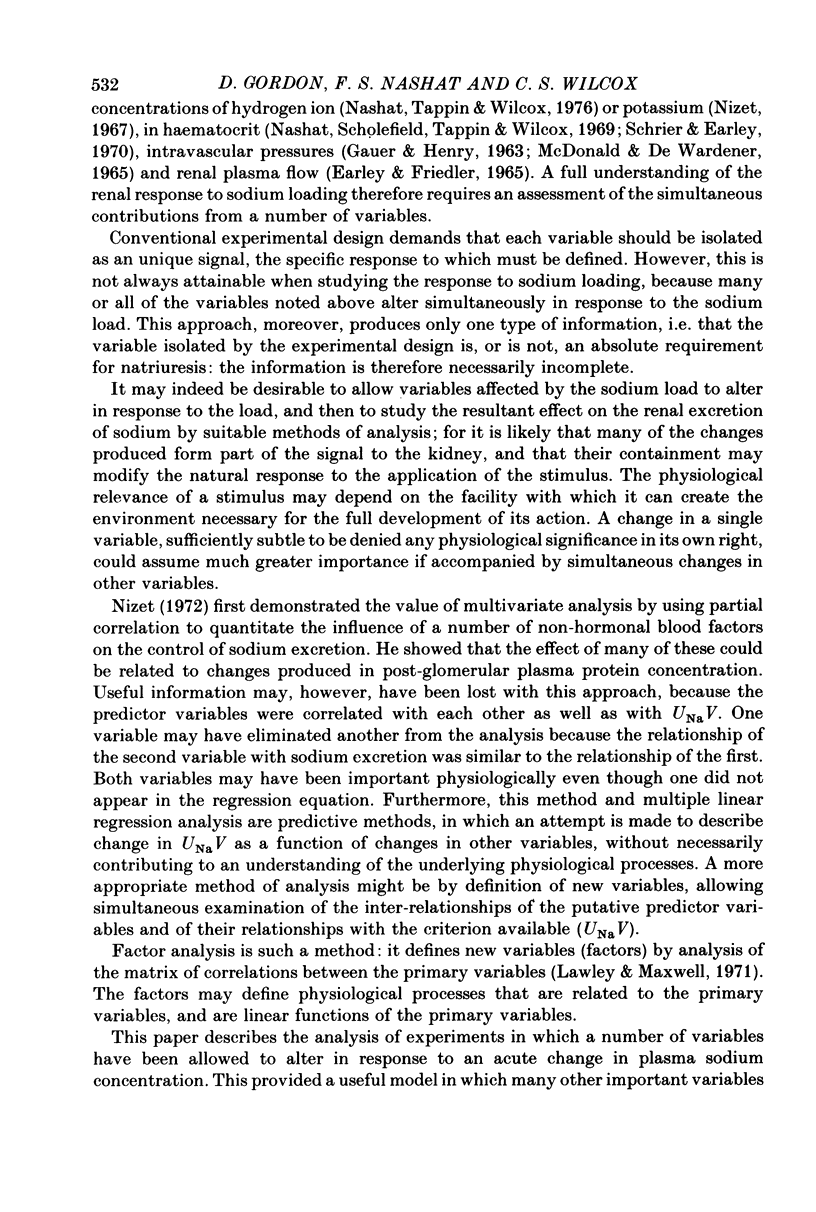
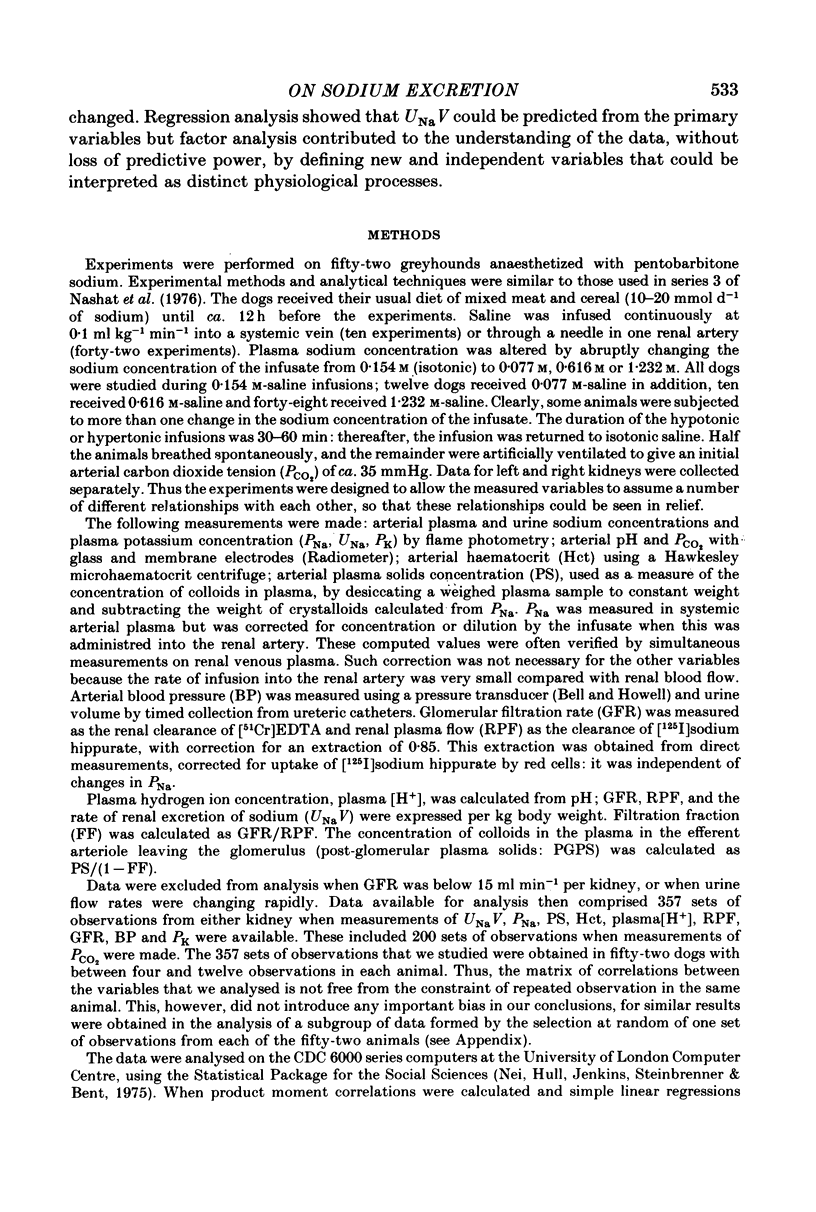
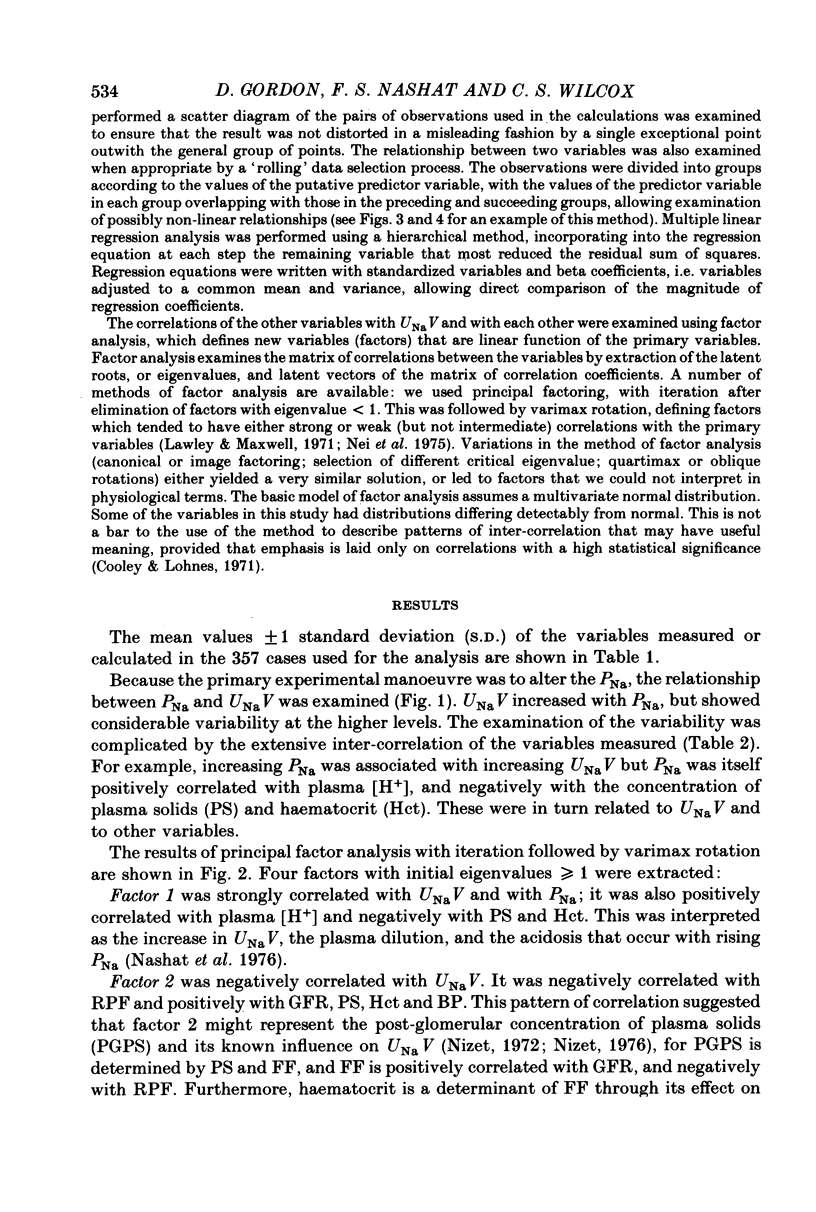
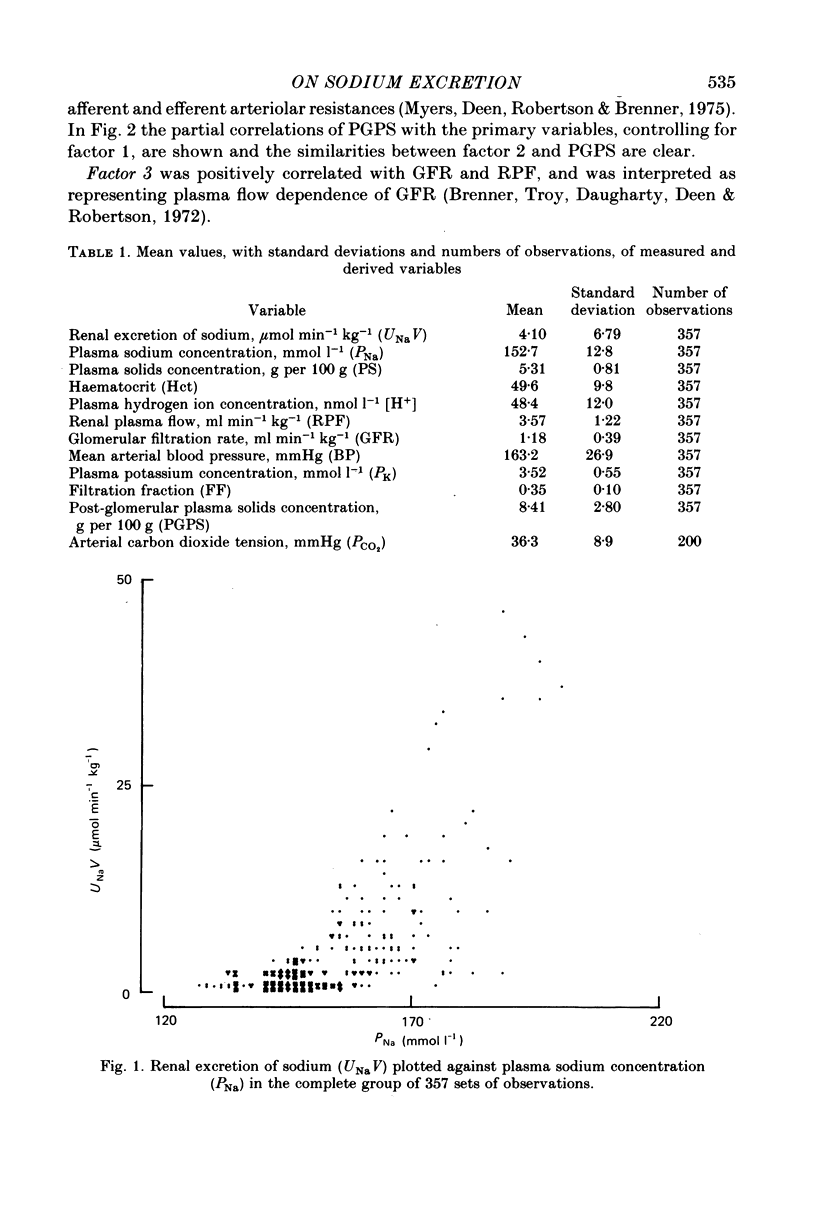
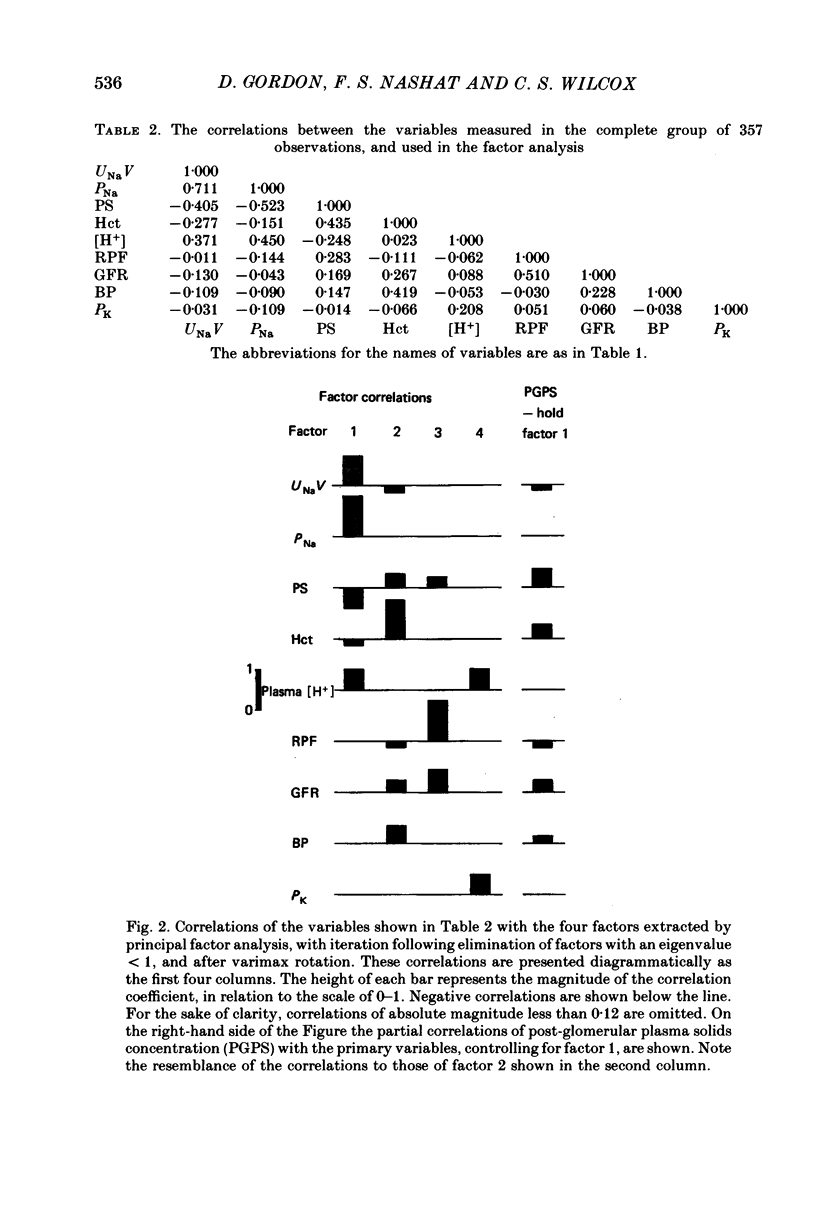
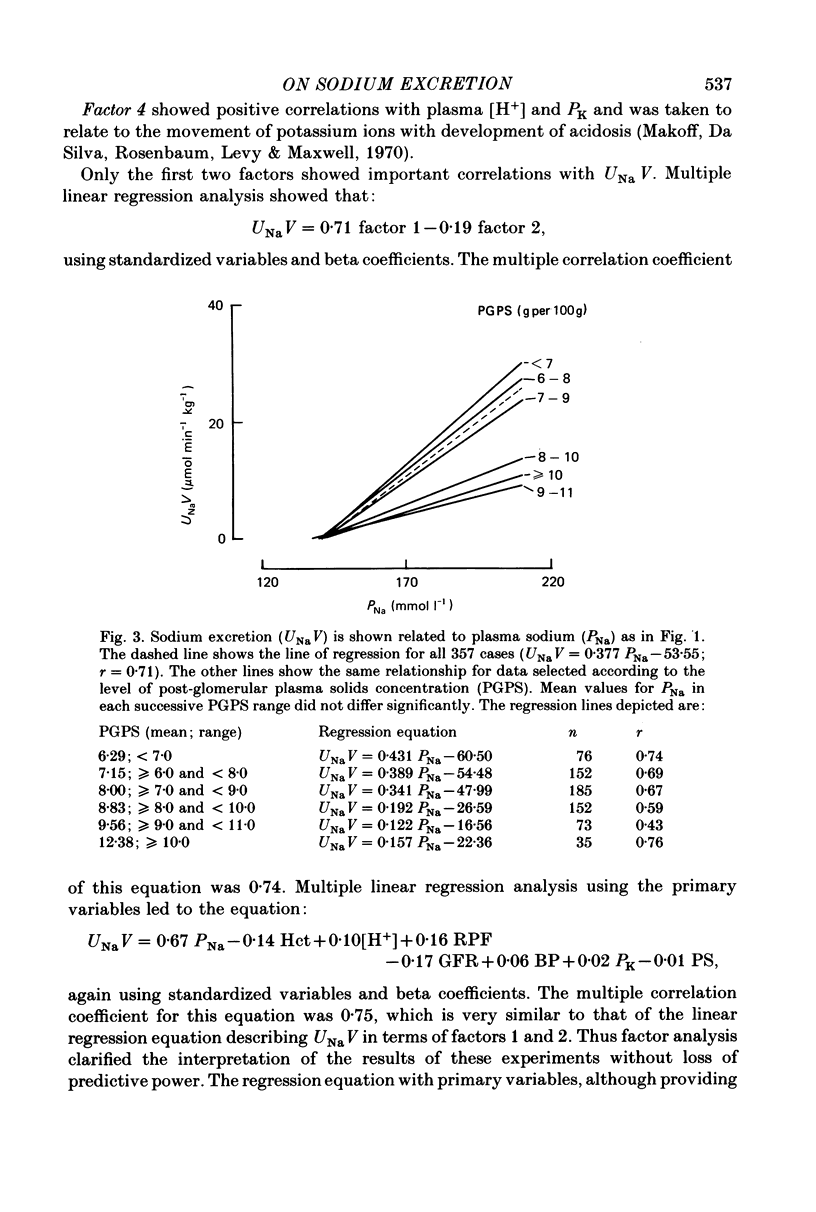
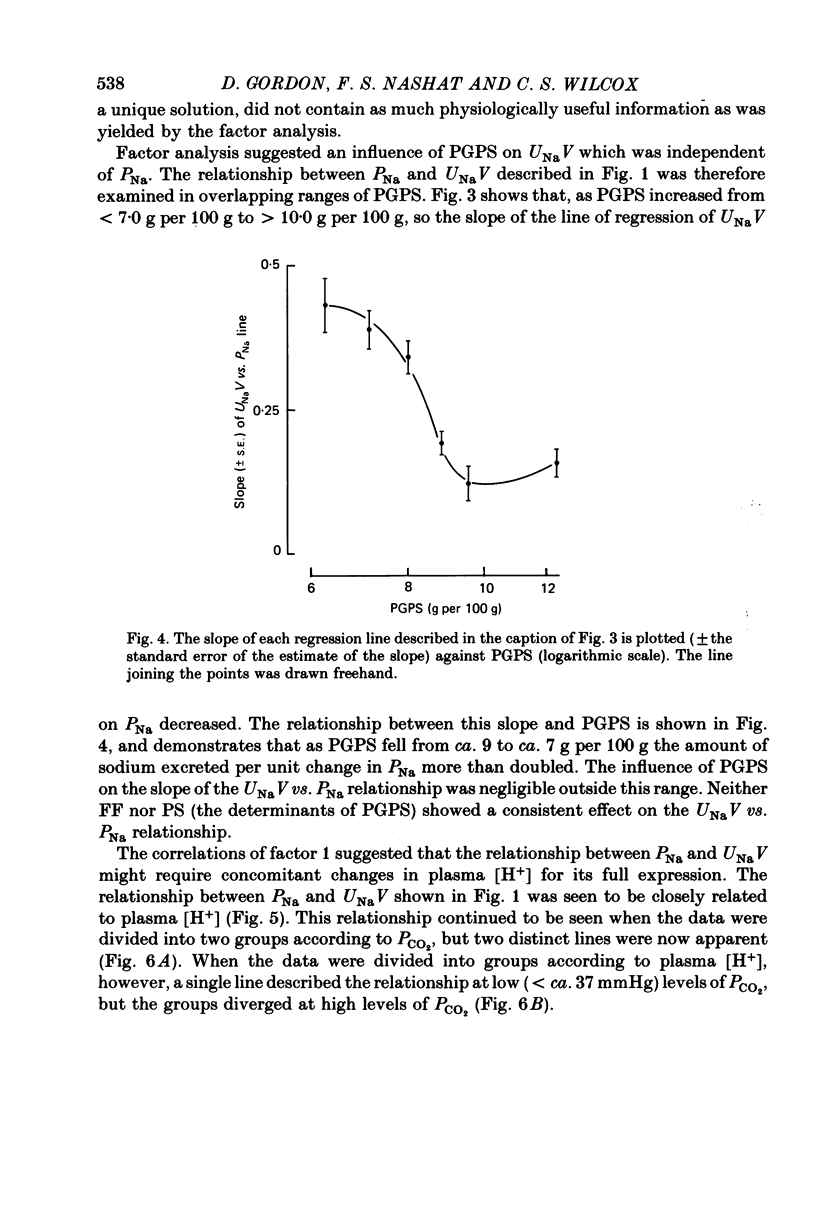

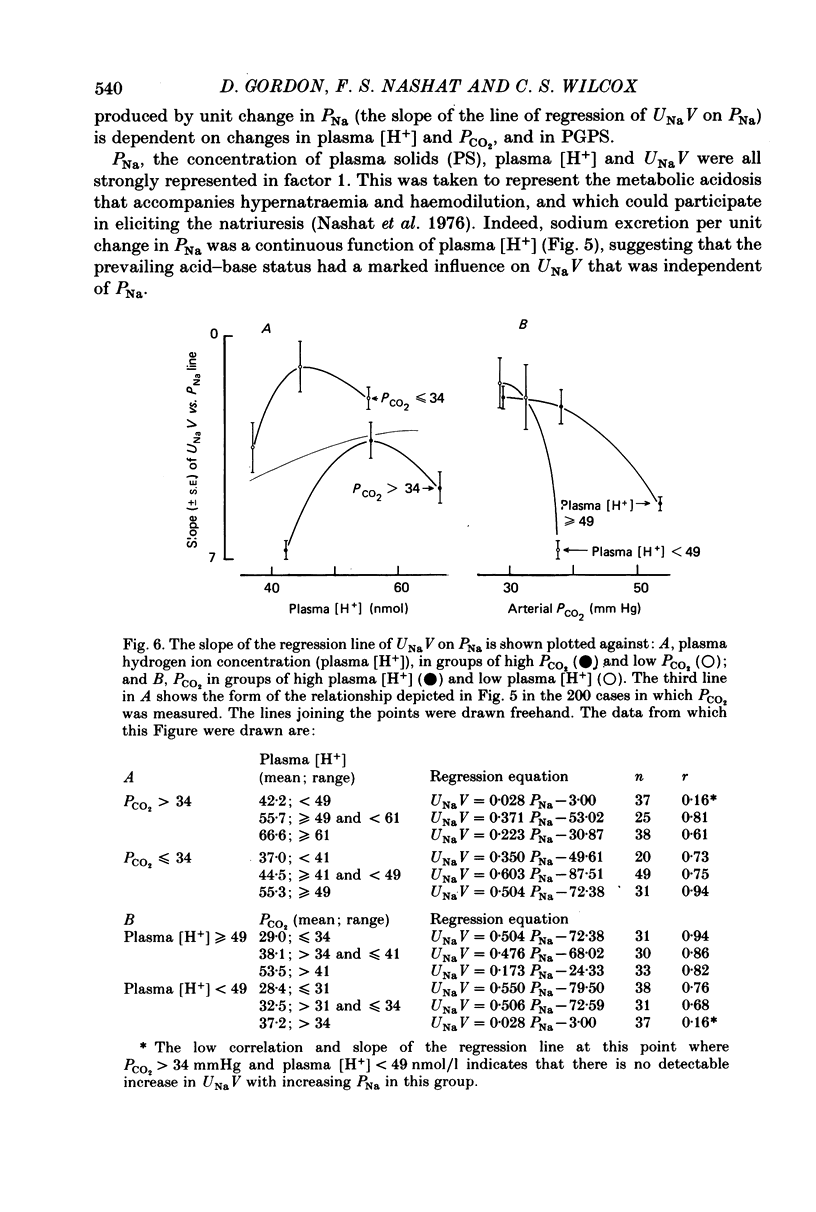
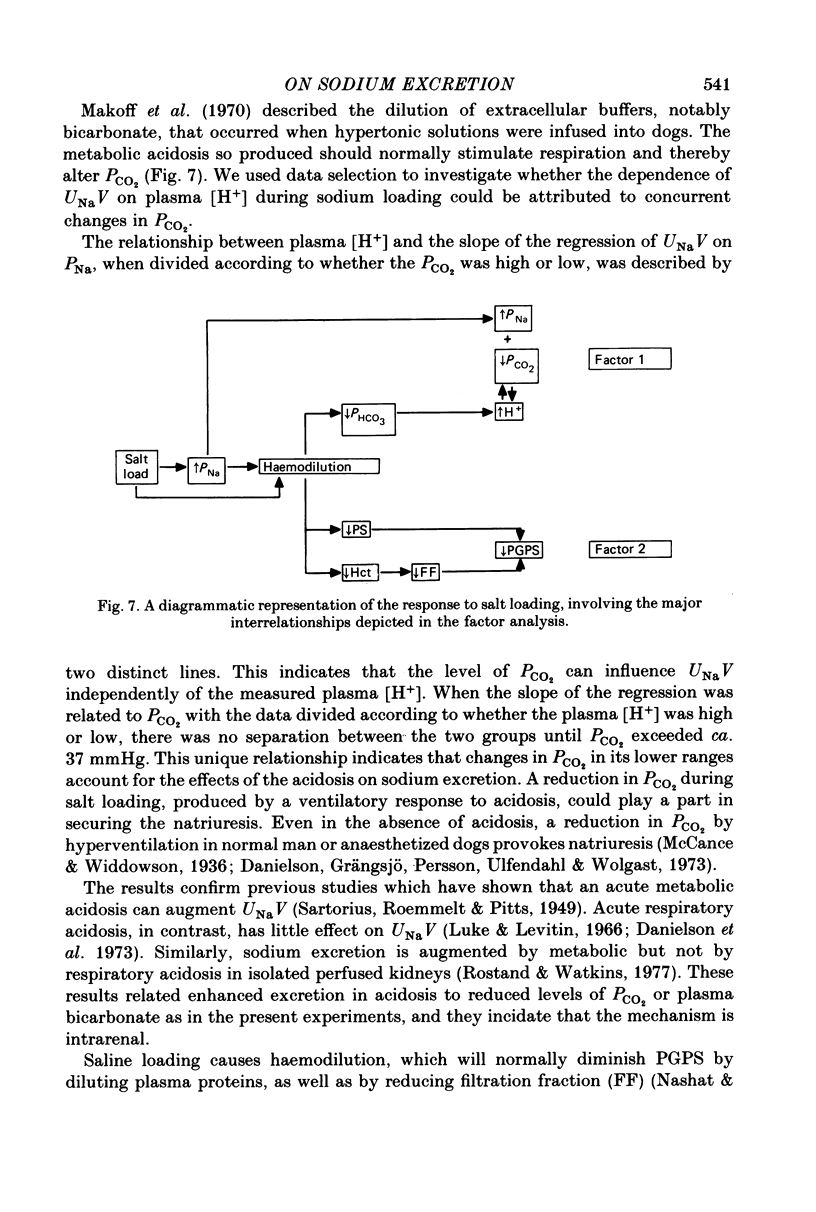
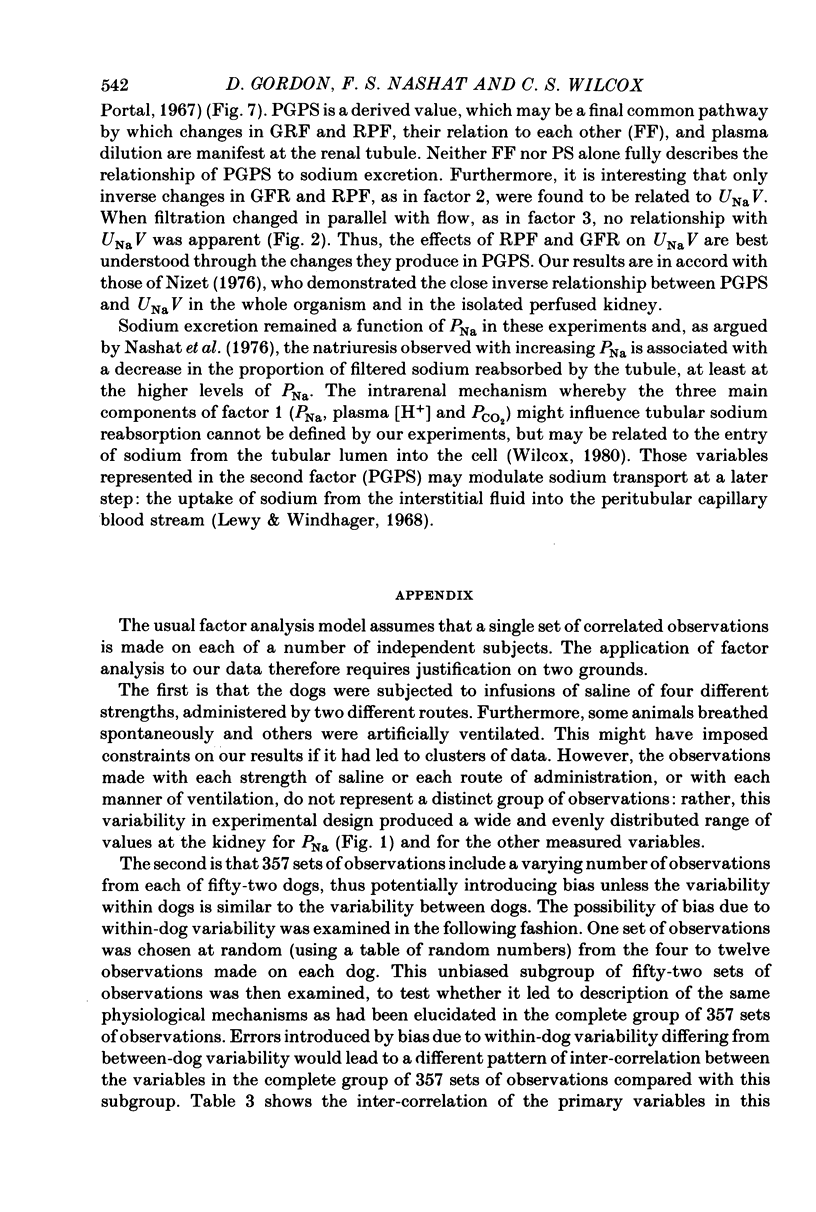
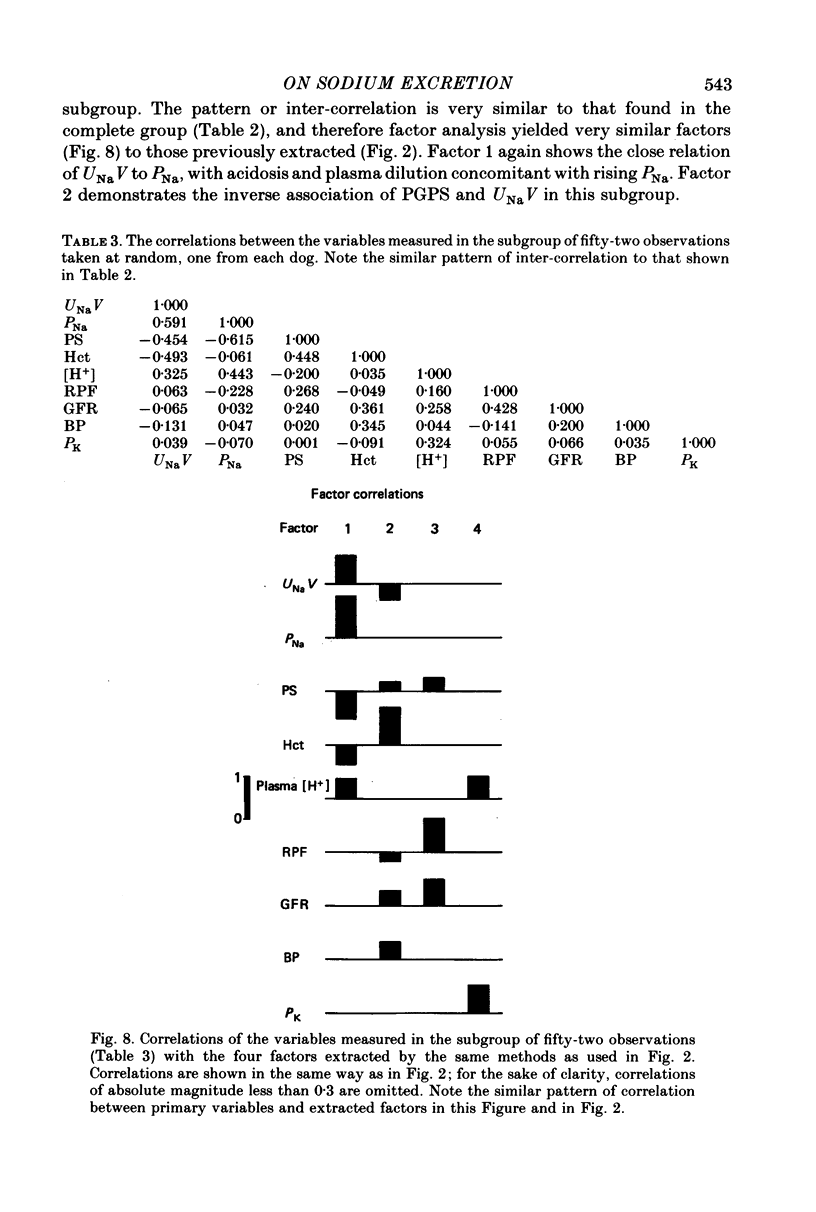
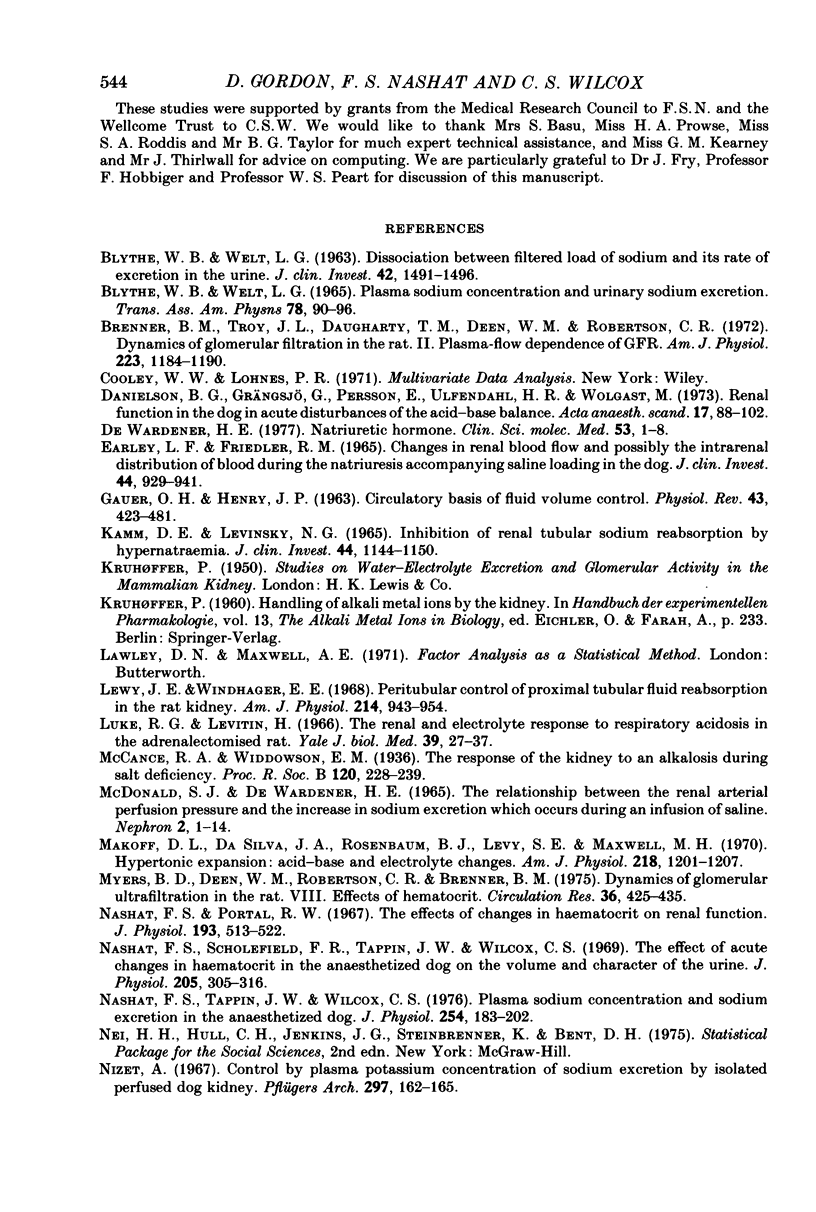
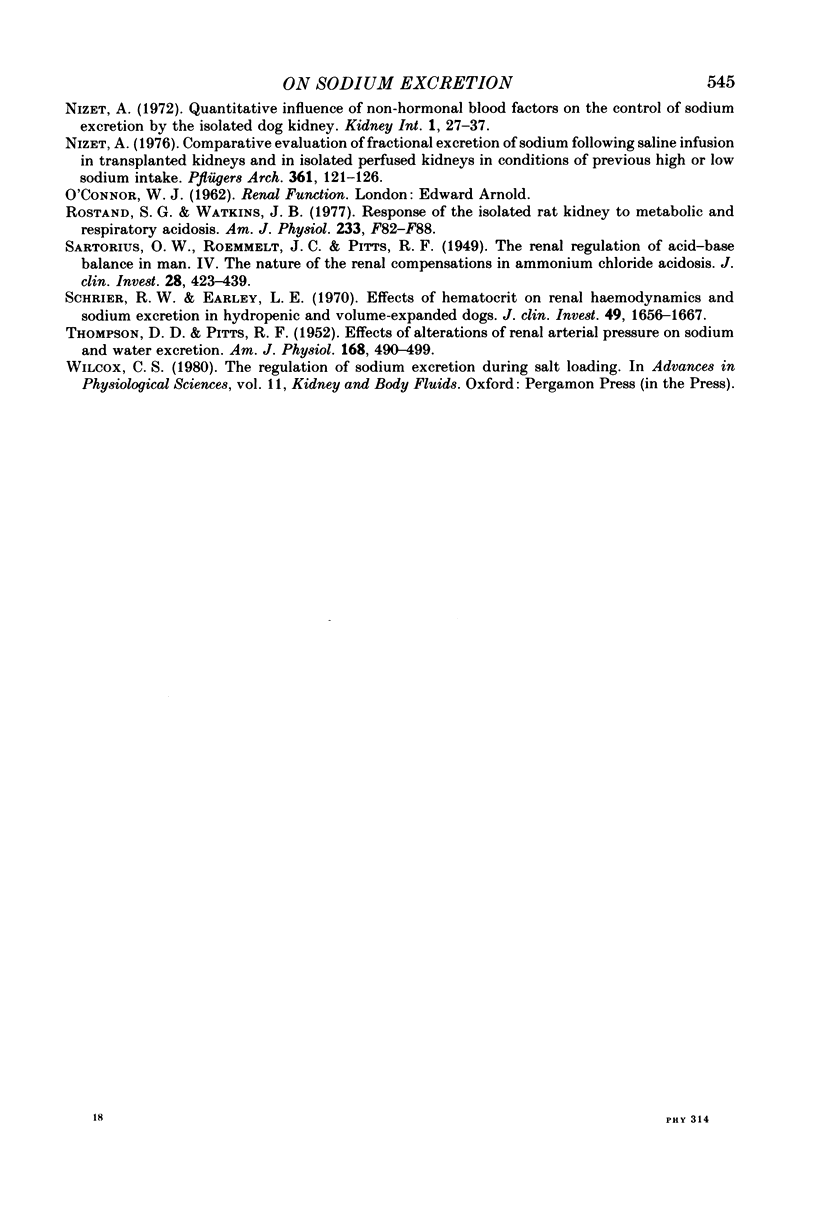
Selected References
These references are in PubMed. This may not be the complete list of references from this article.
- BLYTHE W. B., WELT L. G. DISSOCIATION BETWEEN FILTERED LOAD OF SODIUM AND ITS RATE OF EXCRETION IN THE URINE. J Clin Invest. 1963 Sep;42:1491–1496. doi: 10.1172/JCI104833. [DOI] [PMC free article] [PubMed] [Google Scholar]
- Blythe W. B., Welt L. G. Plasma sodium concentrations and urinary sodium excretion. Trans Assoc Am Physicians. 1965;78:90–96. [PubMed] [Google Scholar]
- Brenner B. M., Troy J. L., Daugharty T. M., Deen W. M., Robertson C. R. Dynamics of glomerular ultrafiltration in the rat. II. Plasma-flow dependence of GFR. Am J Physiol. 1972 Nov;223(5):1184–1190. doi: 10.1152/ajplegacy.1972.223.5.1184. [DOI] [PubMed] [Google Scholar]
- Danielson B. G., Grängsjö G., Ulfendahl H. R., Wolgast M. Renal function in the dog in acute disturbances of the acid-base balance. Acta Anaesthesiol Scand. 1973;17(2):88–102. doi: 10.1111/j.1399-6576.1973.tb00803.x. [DOI] [PubMed] [Google Scholar]
- De Wardener H. E. Natriuretic hormone. Clin Sci Mol Med. 1977 Jul;53(1):1–8. doi: 10.1042/cs0530001. [DOI] [PubMed] [Google Scholar]
- EARLEY L. E., FRIEDLER R. M. CHANGES IN RENAL BLOOD FLOW AND POSSIBLY THE INTRARENAL DISTRIBUTION OF BLOOD DURING THE NATRIURESIS ACCOMPANYING SALINE LOADING IN THE DOG. J Clin Invest. 1965 Jun;44:929–941. doi: 10.1172/JCI105210. [DOI] [PMC free article] [PubMed] [Google Scholar]
- GAUER O. H., HENRY J. P. Circulatory basis of fluid volume control. Physiol Rev. 1963 Jul;43:423–481. doi: 10.1152/physrev.1963.43.3.423. [DOI] [PubMed] [Google Scholar]
- KAMM D. E., LEVINSKY N. G. INHIBITION OF RENAL TUBULAR SODIUM REABSORPTION BY HYPERNATREMIA. J Clin Invest. 1965 Jul;44:1144–1150. doi: 10.1172/JCI105221. [DOI] [PMC free article] [PubMed] [Google Scholar]
- Lewy J. E., Windhager E. E. Peritubular control of proximal tubular fluid reabsorption in the rat kidney. Am J Physiol. 1968 May;214(5):943–954. doi: 10.1152/ajplegacy.1968.214.5.943. [DOI] [PubMed] [Google Scholar]
- Luke R. G., Levitin H. The renal and electrolyte response to respiratory acidosis in the adrenalectomized rat. Yale J Biol Med. 1966 Aug;39(1):27–37. [PMC free article] [PubMed] [Google Scholar]
- MCDONALD S. J., DE WARDENER H. E. THE RELATIONSHIP BETWEEN THE RENAL ARTERIAL PERFUSION PRESSURE AND THE INCREASE IN SODIUM EXCRETION WHICH OCCURS DURING AN INFUSION OF SALINE. Nephron. 1965;2:1–14. doi: 10.1159/000179370. [DOI] [PubMed] [Google Scholar]
- Makoff D. L., da Silva J. A., Rosenbaum B. J., Levy S. E., Maxwell M. H. Hypertonic expansion: acid-base and electrolyte changes. Am J Physiol. 1970 Apr;218(4):1201–1207. doi: 10.1152/ajplegacy.1970.218.4.1201. [DOI] [PubMed] [Google Scholar]
- Myers B. D., Deen W. M., Robertson C. R., Brenner B. M. Dynamics of glomerular ultrafiltration in the rat. VIII. Effects of hematocrit. Circ Res. 1975 Mar;36(3):425–435. doi: 10.1161/01.res.36.3.425. [DOI] [PubMed] [Google Scholar]
- Nashat F. S., Portal R. W. The effects of changes in haematocrit on renal function. J Physiol. 1967 Dec;193(3):513–522. doi: 10.1113/jphysiol.1967.sp008375. [DOI] [PMC free article] [PubMed] [Google Scholar]
- Nashat F. S., Scholefield F. R., Tappin J. W., Wilcox C. S. The effect of acute changes in haematocrit in the anaesthetized dog on the volume and character of the urine. J Physiol. 1969 Nov;205(2):305–316. doi: 10.1113/jphysiol.1969.sp008966. [DOI] [PMC free article] [PubMed] [Google Scholar]
- Nashat F. S., Tappin J. W., Wilcox C. S. Plasma sodium concentration and sodium excretion in the anaesthetized dog. J Physiol. 1976 Jan;254(1):183–202. doi: 10.1113/jphysiol.1976.sp011228. [DOI] [PMC free article] [PubMed] [Google Scholar]
- Nizet A. Comparative evaluation of fractional excretion of sodium following saline infusion in transplanted kidneys and in isolated perfused kidneys in conditions of previous high or low dietary sodium intake. Pflugers Arch. 1976 Jan 30;361(2):121–126. doi: 10.1007/BF00583455. [DOI] [PubMed] [Google Scholar]
- Nizet A. Control by plasma potassium concentration of sodium excretion by isolated perfused dog kidney. Pflugers Arch Gesamte Physiol Menschen Tiere. 1967;297(3):162–165. doi: 10.1007/BF00362708. [DOI] [PubMed] [Google Scholar]
- Nizet A. Quantitative influence of non-hormonal blood factors on the control of sodium excretion by the isolated dog kidney. Kidney Int. 1972;1(1):27–37. doi: 10.1038/ki.1972.5. [DOI] [PubMed] [Google Scholar]
- Rostand S. G., Watkins J. B. Response of the isolated rat kidney to metabolic and respiratory acidosis. Am J Physiol. 1977 Aug;233(2):F82–F88. doi: 10.1152/ajprenal.1977.233.2.F82. [DOI] [PubMed] [Google Scholar]
- Sartorius O. W., Roemmelt J. C., Pitts R. F., Calhoon D., Miner P. THE RENAL REGULATION OF ACID-BASE BALANCE IN MAN. IV. THE NATURE OF THE RENAL COMPENSATIONS IN AMMONIUM CHLORIDE ACIDOSIS. J Clin Invest. 1949 May;28(3):423–439. doi: 10.1172/JCI102087. [DOI] [PMC free article] [PubMed] [Google Scholar]
- Schrier R. W., Earley L. E. Effects of hematocrit on renal hemodynamics and sodium excretion in hydropenic and volume-expanded dogs. J Clin Invest. 1970 Sep;49(9):1656–1667. doi: 10.1172/JCI106383. [DOI] [PMC free article] [PubMed] [Google Scholar]
- THOMPSON D. D., PITTS R. F. Effects of alterations of renal arterial pressure on sodium and water excretion. Am J Physiol. 1952 Feb;168(2):490–499. doi: 10.1152/ajplegacy.1952.168.2.490. [DOI] [PubMed] [Google Scholar]


